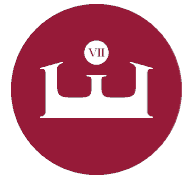Related Research Articles

Landau Forte College Derby is an academy in Derby, England. As a secondary school and sixth form, it serves students aged 11–19 from the City of Derby and surrounding areas.
Brampton Manor Academy is an 11–19 mixed, secondary school and selective sixth form with academy status in East Ham, London, England. It is the second largest school in the London Borough of Newham. In 2019, 41 of its students were offered Oxbridge places; in 2020 the number was 51 and in 2021 it was 55.

Kingsdale Foundation School (KFS) is a British mixed secondary school with academy status in West Dulwich, London, with an age range of 11–19 (Year 7 to sixth form). Admissions to the school are coordinated by the Southwark London Borough Council as part of the Pan London Admissions Arrangements. However, many students live in surrounding boroughs, such as Lambeth, Lewisham and Croydon.

King Edward VII Academy is a large, mixed comprehensive secondary school in Gaywood Road (A148), King's Lynn, Norfolk, England with around 1,300 pupils, including about 300 in sixth form education. Prior to the school year beginning in September 1979, KES was an all-boys state grammar school.
The E-ACT Burnham Park Academy was a co-educational academy in Burnham, Buckinghamshire, England until it closed in 2019 due to falling pupil numbers. A small part of the campus is located in neighbouring Slough, Berkshire. The academy was sponsored by E-ACT, and had approximately 235 pupils.

The Portsmouth Academy is a secondary school with academy status, located in Portsmouth, Hampshire, England on St Mary's Road in the central district of Fratton near St Mary's Church. Originally established as a girls' school, it became co-educational in the 2017/18 school year.

Our Lady's Catholic College (OLCC) is a mixed sex secondary school for pupils aged 11–18. It is located in Skerton, just off the A6 road, north of the River Lune, Lancaster in the North West of England. Formerly Our Lady's Catholic High School, it changed its name after being awarded Specialist Sports College status in September 2003. The college teaches Key Stage 3, Key Stage 4, and Sixth Form.
Manor Croft Academy is a smaller than average coeducational secondary school with academy status, located in the town of Dewsbury, West Yorkshire, England.
Harris Academy Merton is a secondary school and sixth form located in the London Borough of Merton district of Mitcham. When inspected by Ofsted in both 2012 and 2022, it was judged to be outstanding.

Worle Community School - an Academy is a coeducational secondary school academy located in Worle, a suburb of Weston-super-Mare in North Somerset, England.

St. Mary's Roman Catholic High School is a co-educational, 11-19 secondary school in Croydon, England.
Holmfirth High School is a coeducational secondary school located on Heys Road in Thongsbridge, Holmfirth, West Yorkshire, England.
The Dover Christ Church Academy, previously known as Archers Court Secondary School is a coeducational secondary school and sixth form located in Whitfield, Kent, 4 miles north of Dover.
The English Baccalaureate (EBacc) is a school performance indicator in England linked to the General Certificate of Secondary Education (GCSE) results. It measures students' attainment by calculating an average score from specified subject grades. The EBacc includes subjects which are studied in many subsequent university programmes.

The Charles Dickens School is a co-educational secondary modern school located in Broadstairs in the English county of Kent. The school is named after Charles Dickens, the 19th-century writer and social critic. It is one of six non-selective schools on the Isle of Thanet, physically isolated corner of Kent.
St Edmund's Catholic School is a co-educational Roman Catholic secondary school located in Dover, Kent, England. The school is named after Edmund of Abingdon, and is under the jurisdiction of the Roman Catholic Archdiocese of Southwark.
Judgemeadow Community College is a mixed secondary school located in the Evington area of Leicester in the English county of Leicestershire.
Abbeywood Community School is a mixed secondary school located in the Stoke Gifford area of South Gloucestershire, England. Abbeywood Community School opened in 2010, replacing Filton High School, which previously occupied the site. Abbeywood’s governing body is the Olympus academy trust.

Riverside Campus is an 11-18 mixed, secondary free school and selective sixth form situated in Barking Riverside, London, England. It is one of the largest schools in the London Borough of Barking and Dagenham, with currently over 1,200 students on roll.
SET Saxmundham School is a free school in Saxmundham, Suffolk, East Anglia, with approximately 309 pupils. It was rated "good" by Ofsted in May 2014. In March 2018 Ofsted carried out a short inspection of the school where it maintained its "good" rating. It opened in 2012 with 105 pupils out of a total of 312 places available. The school now has 600 places available.
References
- 1 2 3 "Progress 8 and Attainment 8 how measures are calculated" (PDF). HM Government UK. Retrieved 22 January 2018.
- ↑ "All you need to know about secondary school league tables". BBC News. 25 January 2018. Retrieved 1 February 2018.
- ↑ "Good news – Progress 8 will control Ofsted". Rising Curve. 30 January 2017. Retrieved 1 February 2018.
- 1 2 Wiggins, Kaye (31 July 2017). "GCSE Results Day: How does Progress 8 work?". Tes. Retrieved 26 January 2018.
- ↑ "Progress 8 benchmark poster". TES. Retrieved 26 January 2018.
- ↑ Bassey, Michael (29 September 2017). "Progress 8: What you need to know". Tes. Retrieved 2 February 2018.
- ↑ "Weekend read: How much can a Progress 8 score tell you about a school?". Tes. 13 October 2017. Retrieved 2 February 2018.
- ↑ Busby, Eleanor (27 September 2017). "Exclusive: Secondary schools left 'demoralised' by DfE's Progress 8 error". Tes. Retrieved 2 February 2018.
- ↑ "GCSE entries fall across all non-EBacc subjects". www.sec-ed.co.uk. Retrieved 2 February 2018.
- 1 2 "Entries to arts subjects at Key Stage 4 - The Education Policy Institute". The Education Policy Institute. Retrieved 2 February 2018.
- ↑ Busby, Eleanor (17 March 2018). "Exclusive: Pressure from schools forces government to rethink Progress 8 | Tes News". www.tes.com. Retrieved 25 May 2018.
- ↑ "Significant Change to Progress 8 for 2018; Outliers are Out". LeadingLearner. 27 March 2018. Retrieved 25 May 2018.